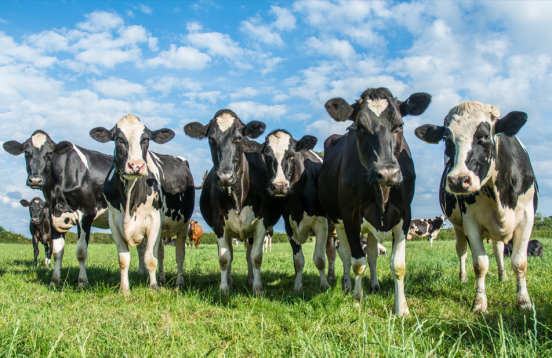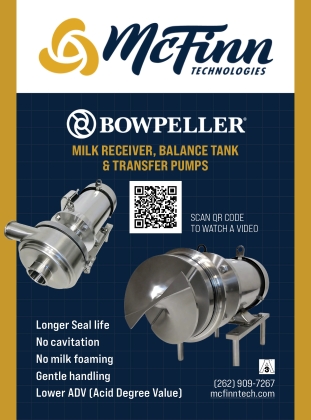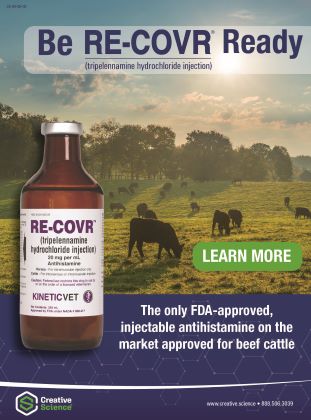The 30/30 Approach from Central Life Sciences

Start Next Year’s Fly Control Today: The 30/30 Approach from Central Life Sciences
As the summer sun beats down across the country, flies may feel like a current concern—but the smartest producers know that successful fly control begins well before pests become visible. In fact, the groundwork for next year’s fly control starts today with a strategic and science-backed plan: the 30/30 approach from Central Life Sciences. This method, built around the behavior of flies and the unpredictability of seasonal weather, is a proven tactic for managing fly populations before they can threaten herd health or profitability. By using a feed-through fly control solution like ClariFly® Larvicide as part of a larger Integrated Pest Management (IPM) program, operations can gain the upper hand—now and in the seasons to come.
Let’s take a closer look at what makes the 30/30 approach so effective and how you can begin setting yourself up for a successful fly control season right now.
What Is the 30/30 Approach?
The 30/30 approach is a strategic guideline created by Central Life Sciences to help producers get ahead of fly populations by starting early and finishing strong.
Here’s how it works:
- Start your feed-through product 30 days before the average daily temperatures reach 65°F in the spring, typically 30 days before the average last frost
- Continue feeding 30 days after the first frost in the fall.
This early and extended timeline ensures you’re treating flies before they emerge in large numbers in the spring—and long enough in the fall to minimize overwintering pupae that could lead to bigger problems next year.
By bracketing the fly season with this approach, you not only protect your livestock when flies are most active but also reduce the population that would otherwise carry over into the following spring.
Why Temperature Matters
Flies begin to emerge when average daily temperatures hover around 65°F, often before many producers think to begin treatment. Missing this crucial window allows overwintering fly pupae to mature and emerge, jumpstarting fly populations early in the season. Once flies gain a foothold, they can quickly overwhelm your cattle. Studies show that an individual animal can host up to 4,000 flies, leading to reduced weight gain, diminished milk production, increased disease risk, and significant economic losses Starting 30 days before the 65°F threshold means you’re disrupting the life cycle of flies before they explode in numbers, significantly improving your control throughout the peak fly season.
Don’t Stop at the First Frost
Ending your fly control program too early in the fall is another common misstep. After the first frost, many producers assume the problem is over, but weather can be unpredictable, and warm snaps can bring fly activity back to life. That is why Central Life Sciences recommends continuing your feed-through fly control product 30 days past the first frost. This extra time reduces the number of immature pupae that could survive the winter and become a new generation of pests in spring.
It’s a simple step with compounding benefits: fewer overwintering flies mean fewer flies in early spring, which means fewer issues during the next peak season.
The Role of Feed-Through Fly Control
At the core of the 30/30 approach is the use of feed-through fly control solutions like ClariFly® Larvicide.
These products work by passing through the animal’s digestive system and depositing in the manure, where they interrupt the fly life cycle. By targeting flies before they become adults, you
reduce the overall population without needing extra labor or time-intensive applications.
Importantly, feed-through products do not affect the animal, their feed intake, or their performance. They are an efficient way to integrate fly control into your everyday feeding practices.
Why Timing Is Everything
Flies are more than just a nuisance. They spread over 65 known diseases and cause real economic harm in both dairy and beef operations. Unfortunately, once fly populations reach a certain level known as the economic threshold, they are not only harder to manage, but more expensive to control.
That’s why the timing of your fly control efforts matters as much as the products you use. Waiting until flies are visible or problems start occurring is often too late.
The 30/30 approach ensures you’re ahead of the curve, treating flies before they become an issue and continuing treatment long enough to see lasting results.
Integrating the 30/30 Approach into an IPM Program
While the 30/30 approach is highly effective, it works best as part of a comprehensive Integrated Pest Management (IPM) program. No single tactic can completely eliminate flies, but together, multiple strategies can drastically reduce populations and protect your herd’s performance.
An effective IPM program includes:
- Cultural Control:
Keep pens, lots, and feeding areas clean and dry. Manure management is critical, as flies breed in moist organic material.
- Biological Control:
Augment and preserve the native fly predators in your area by avoiding general, broad insecticidal premise applications. Introduce natural predators or parasites of flies, such as beneficial wasps that target fly pupae.
- Mechanical/Physical Control:
Use fly traps, sticky ribbons, and fans to physically reduce fly presence in barns and shelters.
- Chemical Control:
Combine feed-through products with targeted on-animal treatments, sprays, or baits when needed, especially during peak fly times.
When feed-through products like ClariFly® Larvicide are used within a well-rounded IPM strategy, the results are stronger, longer-lasting, and more cost-effective.
How to Prepare Now for Next Year’s Fly Season
You may be mid-season now, but forward-thinking producers should already be planning their 30/30 strategy for the year ahead. Here is how to get started:
- Know your regional temperature trends.
Research the average dates for when your area hits 65°F in the spring and when the first frost typically occurs in the fall. Mark your calendar 30 days before and after these dates. - Incorporate feed-through products early.
Begin using ClariFly® Larvicide according to your 30/30 timeline. Do not wait for flies to appear. - Stick with the program into fall.
Continue feed-through applications for at least 30 days after the first frost. This helps wipe out overwintering pupae and gives you a head start for next year. - Evaluate your current IPM efforts.
Take stock of what is working and what is not. Strengthen areas like sanitation, biological support, and physical control measures before next spring. - Talk to your nutritionist or veterinarian.
Ensure your feed-through solution is being properly delivered in rations and assess any other herd health needs.
Stay Ahead with the 30/30 Advantage
Every year, fly season feels like a battle—but it doesn’t have to be a losing one. With the 30/30 approach from Central Life Sciences, producers gain a simple, science-based strategy that keeps them one step ahead.
By starting 30 days early and staying 30 days late, and pairing that with a smart IPM program, you can dramatically reduce fly populations, boost cattle comfort, and improve your operation’s bottom line.
Don’t wait for the first signs of trouble—fly control starts now.
To learn more about ClariFly® Larvicide and implementing the 30/30 approach on your operation, visit CentralFlyControl.com.
ClariFly is a registered trademark of Wellmark International.
For more Cattle Industry News




